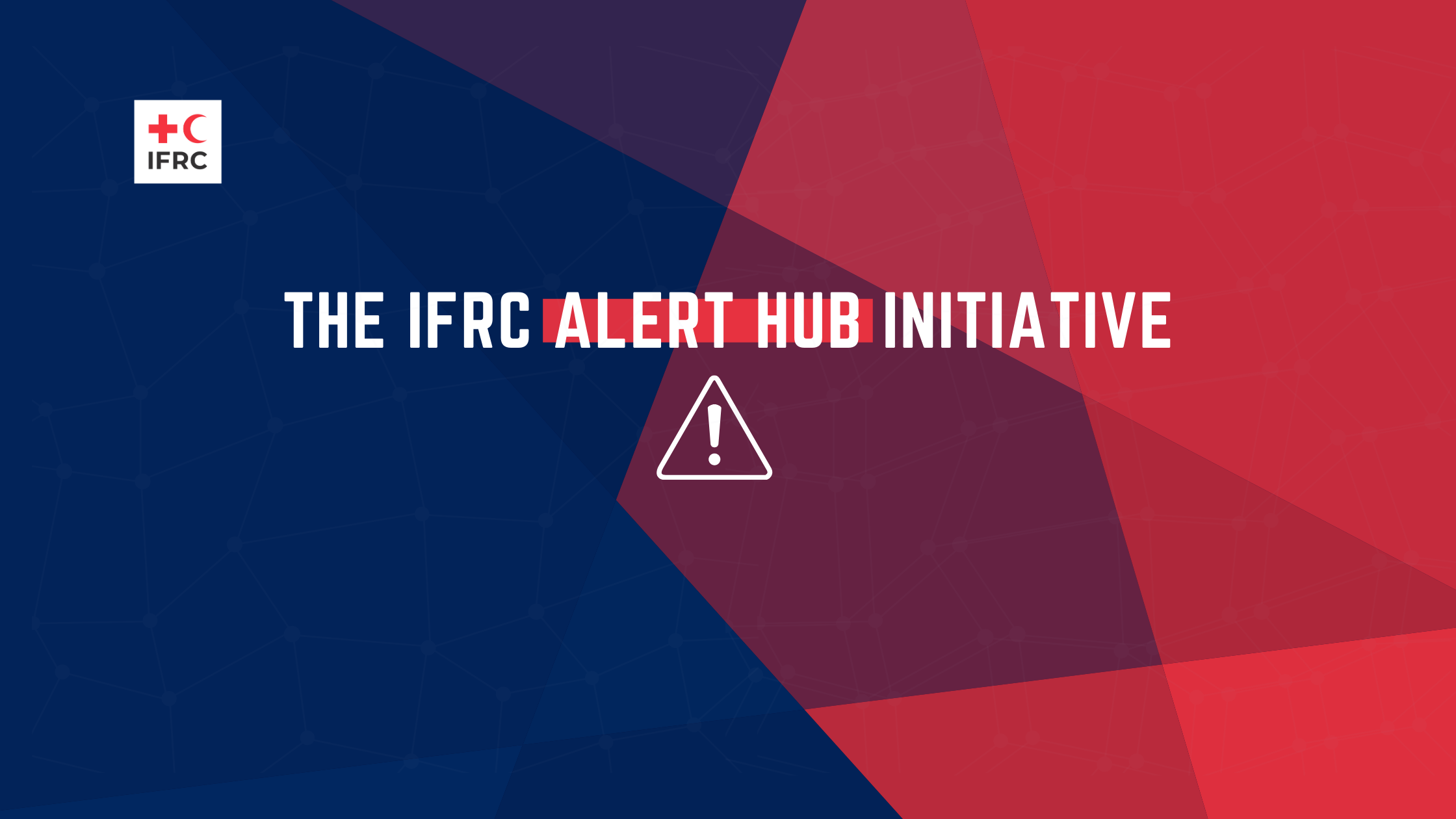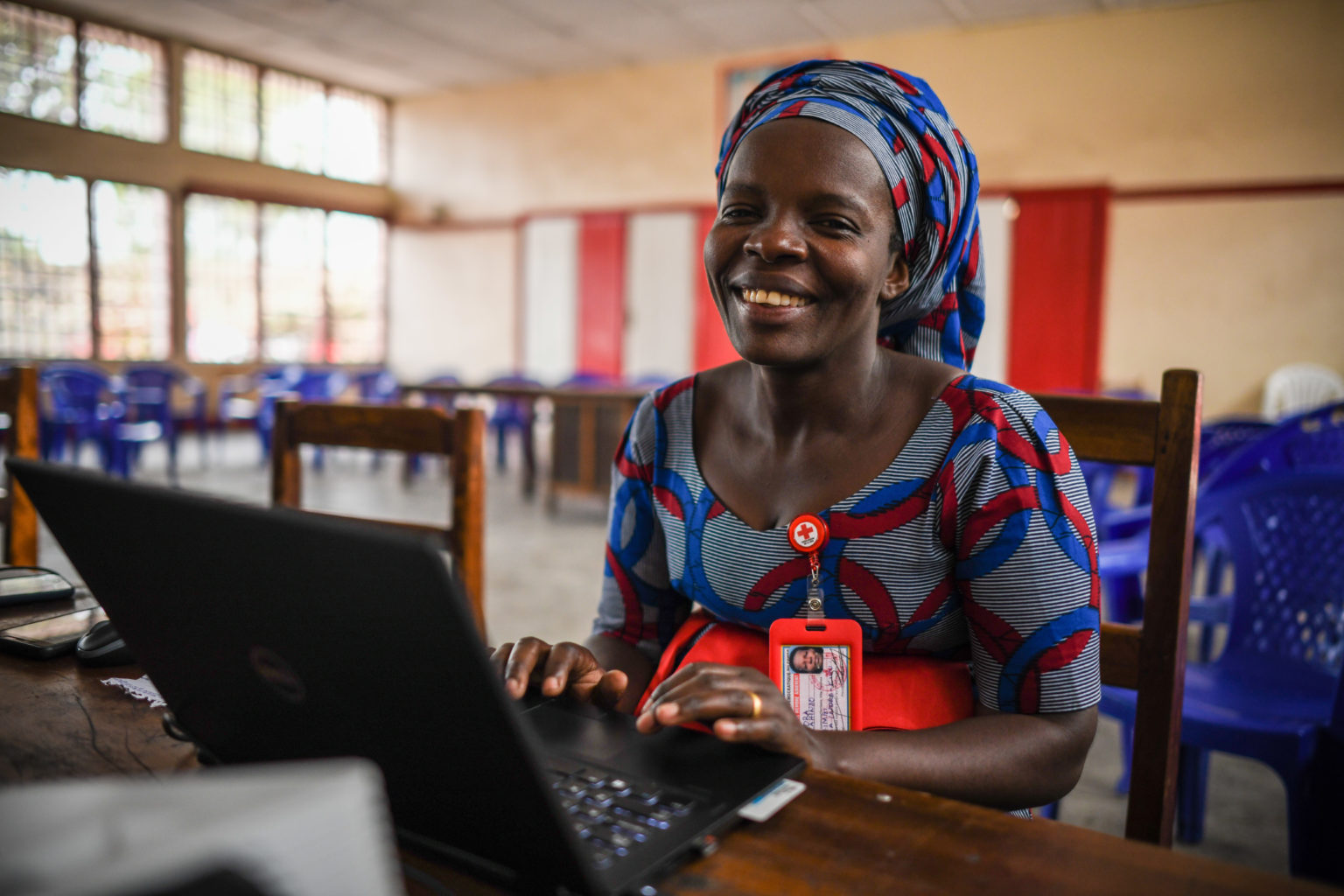The IFRC Alert Hub Initiative Spurs Innovation for Effective Emergency Alerting

An amazing surge of innovations in emergency alerting is happening now to ensure accurate and actionable emergency alerts reach communities around the world. New communications technology and international standards have tremendously improved all-media and all-hazard public warnings that can save lives and livelihoods.
As part of its long-standing ambitions to ensure that ‘last mile’ communities receive the most timely and effective emergency alerting possible, IFRC is expanding the use of the Common Alerting Protocol (CAP) under the IFRC Alert Hub Initiative.
IFRC together with governmental, non-governmental, and commercial organizations aims to achieve the broadest adoption of CAP worldwide. CAP is critical for disaster management and effectively alerting communities at risk to save lives and livelihoods; for exchanging all-hazard emergency alerts and public warnings over different networks; and, for improving better preparedness and response through collaboration, education, and sharing of expertise.
The Common Alerting Protocol (CAP)
CAP is a standard business form for all-hazard emergency alerting. CAP, as it was designated by the International Telecommunication Union (ITU) Recommendation X.1303, is recognized internationally as the key standard to achieve all-hazards, all-media public alerting for emergencies. Big emergencies involve massive numbers of people, who get a lot of information in diverse ways.
The CAP standard format provides fields to cover the key facts of an emergency in the same way. These key facts are carried in the elements of a CAP message format.
• What is the event?
• Where is will it happen?
• How soon is it coming?
• How bad will it be? How sure are the experts?
What should people do?
The format includes an ‘instruction’ field to provide information on what actions people should take in response to the emergency alert. Leveraging Public Awareness and Public Education (PAPE) messages with CAP alerting allows the instruction text to be more understandable and harmonized across all communication channels. Localized PAPE key messages on how individuals and households can prepare for, respond to, and recover from emergencies are already available on a global platform of Red Cross Red Crescent National Societies. Through this harmonization of trusted messaging, communities can receive consistent and reliable information across different communication channels and learn how to act safely.
For more information on the PAPE messages, please visit this site https://www.ifrc.org/public-awareness-and-public-education-disaster-risk-reduction
The IFRC Alert Hub Initiative
“The IFRC Alert Hub Initiative aims to protect lives and livelihoods by increasing the use of the Common Alerting Protocol and expanding the reach of dependable, fast, and actionable early warning messages to people at risk.”
The IFRC Alert Hub Initiative, supported by USAID and Google, is a collaborative effort for all digital communications and devices from cellular, networks, the Internet, mass media, radio broadcasting, and television to disseminate emergency alerts to reach out to the largest public.
Today, 74% of the world’s population lives in a country with at least one national CAP news feed operating. However, among Least Developed Countries (LDCs), CAP uptake rates only 22%. “A gross injustice[i]”, the IFRC Alert Hub Initiative is actively working towards closing this CAP systems gap. In 2021, to ensure CAP’s broader reach and effectiveness, IFRC’s Disaster, Crises, and Climate Department launched The Alert Hub initiative.
The IFRC Alert Hub Initiative, funded by USAID and Google.org, works in close collaboration with the Global Disaster Preparedness Center, the Red Cross Red Crescent Climate Centre and other international organizations including with the World Meteorological Organization (WMO) and with the International Telecommunications Union (ITU). Crucial partners to further expand the use of CAP globally, both WMO and ITU have worked extensively to provide capacities, guidelines and expertise to support its implementation. The Alert Hub Initiative is implemented in a targeted list of countries that have been prioritized with regards to their CAP implementation status, frequency of natural hazards, and development status, as well as interest from funding agencies.
IFRC is committed to strengthening and building capacities for CAP utilization in 33 countries. As part of the initiative, a virtual CAP implementation toolkit is being developed to support the advocacy for and implementation of CAP beyond the initial target countries. National Societies play a key role in promoting the use of the CAP standard format and the Alert Hub by their government partners. The Alert Hub Initiative will support National Societies by way of:
• Facilitating technical training for National Societies to become ‘CAP champions.’
• Providing guidance and ongoing mentoring for managing, outreach, and partnership building with alerting authorities and media for the use and dissemination of CAP.
• Enabling financial support to allow for in-country activities, e.g., local CAP training, learning-by-doing CAP implementation sessions, development of communications and outreach materials, and local travel costs.
For more information on The IFRC Alert Hub Initiative, please visit this site: IFRC Alert Hub Initiative – PrepareCenter
Call to Action on Emergency Alerting
Together with WMO and ITU the IFRC launched a Call to Action on Emergency Alerting at the Humanitarian Partnership and Networks Week 2021. ‘To scale up efforts to ensure that by 2025 all countries have the capability for effective, authoritative emergency alerting that leverages the Common Alerting Protocol (CAP), suitable for all media and all hazards. To date the Call to Action has 18 endorsements from international organizations, companies and international NGOs involved in emergency alerting including from Google, UNDRR, the World Broadcasting Union, Open Commons Consortium, the Alert-Hub.Org, MeteoAlarm and others.
Endorsed by Jagan Chapagain, Secretary General IFRC’s endorsement reads as follows: “The IFRC is pleased to endorse the Call to Action on Emergency Alerting as part of its long-standing ambitions to ensure early warning messages reach ‘last mile’ communities. With 192-member National Societies, the IFRC network is present in hundreds of thousands of local communities, reaching more than 160 million people every year with lifesaving and life-changing support. Through the Anticipation Hub, the Risk-Informed Early Action Partnership (REAP) and by expanding the use of the Common Alerting Protocol (CAP), the IFRC is helping to ensure that communities everywhere receive the most timely and effective emergency alerting possible and can thereby safeguard their lives and livelihoods.”
For more information on Call to Action on Emergency Alerting, please visit this site: Emergency Alerting Call to Action – PrepareCenter
Conclusion
People in harm’s way are often underserved populations (physically, cognitively, socially, and geographically), often exposed to confusing and conflicting information in emergency settings. CAP is about effective alerting, and the right timing, in an understandable format for local emergencies. Supplemented by the IFRC Alert Hub Initiative, communities at risk can benefit from the increased capability for authoritative and effective early warning, and adapted messaging through all-media, all-hazards emergency alerting.
[i] Eliott J. Christian, Common Alerting Protocol (CAP), National Oceanic and Atmospheric Administration, Global Platform for Disaster Risk Reduction, Geneva, Switzerland, 13-17 May 2019



